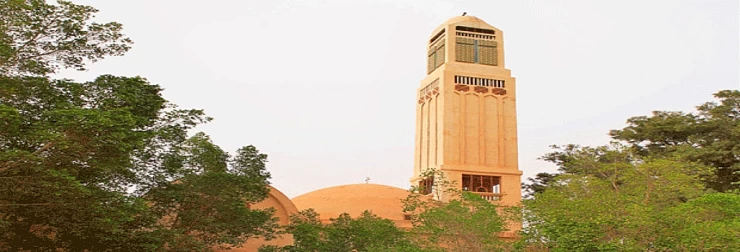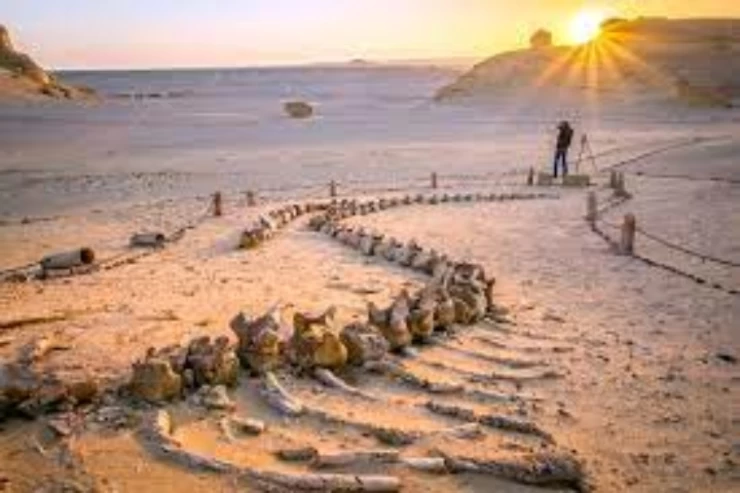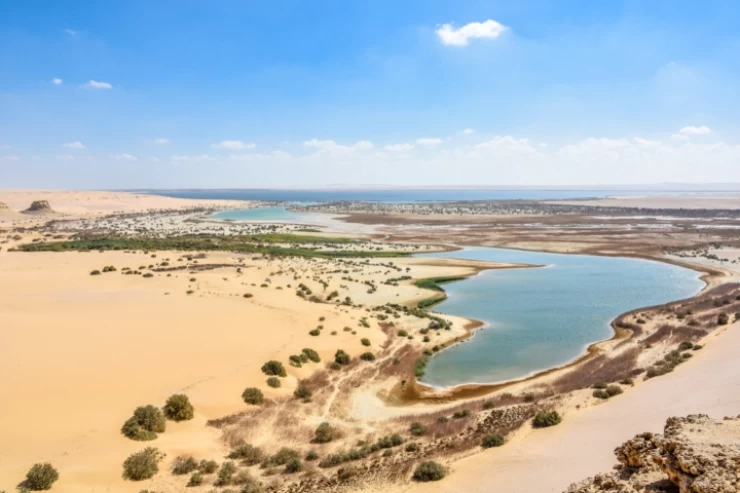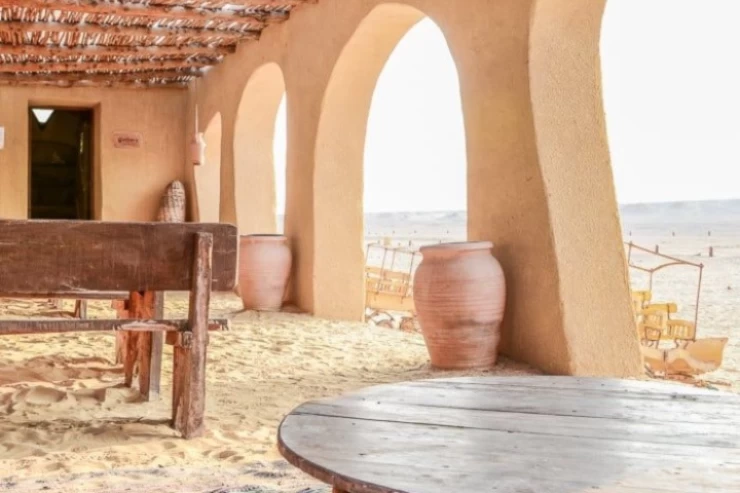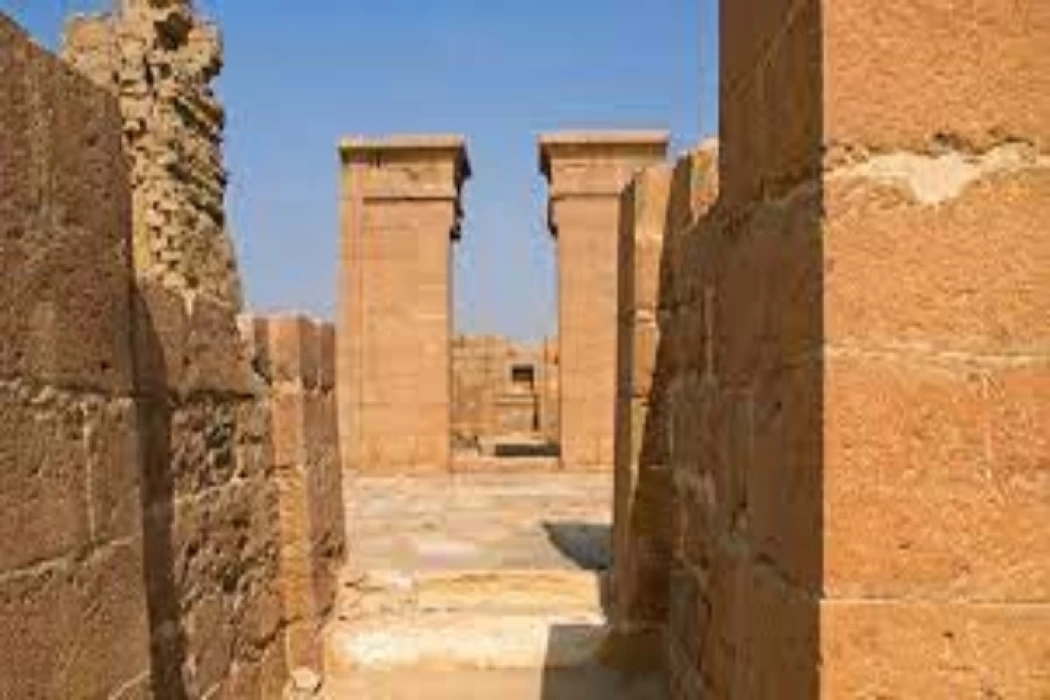
history of Karanis Museum in Fayoum
The archaeological city of kranis in Fayoum governorate is located in the KOM osheim area on Cairo / Fayoum Road at Kilo 70, which is one of the Greco-Roman villages established by Ptolemy II and has an area of 800 meters wide, and the area of the residential city of kranis was about one kilometer from East to West and about 800 m from North to the eastern neighborhood and was famous for several streets, including the Royal Street, was revealed by the excavations of the mission of the Faculty of Arts barley, dates, olives and fruits are in abundance. Ahmed Hassan Mustafa, an antiquities inspector in the Fayoum Antiquities area, says:
The city of kranis Kom osheim has a temple built in the first century AD and there is a large basin outside the temple that was used to raise crocodiles, then the temple, which begins with a longitudinal hall, with a set of rooms on the North and south sides, and with stairs to climb to the upper floor, which is now completely extinct, there is a transverse Hall before the Holy of Holies that was used to place mummified crocodiles, then the Holy of Holies, which is a large place "terrace" used to place the mummified statue and on both sides of the room.
He added that the Genoese and Northern temples are devoid of decorations and were built in the first century AD, and in the facade of the temple there is an inscription from the Roman governor of Egypt with the inscription from the Emperor Nero to the idol Sobek, in addition to there is another inscription in the gate
He pointed out that the activity of the region was an agricultural colony for soldiers who had been terminated from their service and each of them received a piece of land as a reward for him, and the most famous plantations were olives and crops, and in the agricultural museum, there are the remains of pressed olives in the kranis area.
Sayed El Shoura, Director General of Fayoum Antiquities, said that the first excavations in this city began in 1895 for the archaeologist hunt, and then the Michigan expedition conducted excavations in the period from 1914 to 1935, and an expedition from the Faculty of arts of Cairo University conducted excavations and excavations in kranis in 1968, and the expedition found in the city huge numbers of coffins and houses of stone, pottery pots of burnt clay, statues of some Gods, some stone and wood Mills, polished pottery dishes, household utensils, jars for storing grain, pots for storing water, and bronze tools such as awls, needles, and perforators And several decorated graves.
Al-Shura added that a stand-alone neighborhood was found at the far edges of the village from the north-west and South-East with a mill, a bakery and a grain store, as well as two bathrooms from the Roman era, pointing out that the city is now ruins of houses, which are built of adobe bricks and some have a stone foundation; it is characterized by being one-story, and each house is independent of the next, and there are no common walls between the houses, and the walls are still characterized by etching drawings of leaves and bunches of grapes, a number of grape presses and grain mills, and there are also a lot of temples statues and new buildings where the southern temple or the temple of betso Khos and panegros is located, which is constructed of limestone and was built in the era of Emperor Nero, and in front of the temple there are the remains of a basin that seems to have been intended for statues, and the temple inside has a number of chambers with a compartment in the middle on which the god "Sobek" and offerings were placed, and in a wall next to the compartment there is a place inside the wall that looks
As for the northern temple, it is located in the northern side of the city and is about two hundred meters away from the southern temple, which is a limestone building; its length is about 33.5 meters and width is about 10 meters and was dedicated to the temple of the territory "sukhos", and the temples were built of limestone unlike the buildings of the city, which were constructed of adobe bricks. There is also a coward's tomb located on a hill high above the ground and about 2 kilometers north of Umm Al-Athal, and its tombs are divided into types, including pits, which are built of adobe bricks, and another type carved into the rock and its shape is round.
Al-Shura said that they were of obvious durability and modesty commensurate with rural families who joined hands with each other to provide themselves with the basic necessities of life. Al-Shura stressed that the presence of irrigation allowed the planting of Sycamore and palm trees used in the construction of the house and its furniture. in many houses, the logs were inserted into the multiple intervals between the brick blocks, so the branches had to be dropped and irregularly spread, and the flat roofs and roofs were built
As for the ceilings of the rooms below the house, they were usually vaulted, and Wood was used to make windows, doorways, wardrobes, and strengthen the sides outside the house, instead of stone. The manufacture of Windows was very simple; wooden panels were placed in the wall on the four rectangular sides, open horizontally or vertically.
Sayed Al-Shura pointed out that the city of kranis has remained prosperous and full of inhabitants since its inception in the Greek era until the Roman, Christian and then Islamic era, where the Antiquities Authority mission, in January 1990, discovered the presence of Islamic monuments in kranis and found a pottery statue representing a horse with clear details of Islamic inscriptions adorning its "passengers", dating back to the beginning of the Islamic era and a blue glass medallion still retains its natural color until now a set of large-sized pottery vessels were used to preserve grain and grain. A set of bronze tracks was also found in 100 surface tombs dating back to the Roman and Coptic eras.







